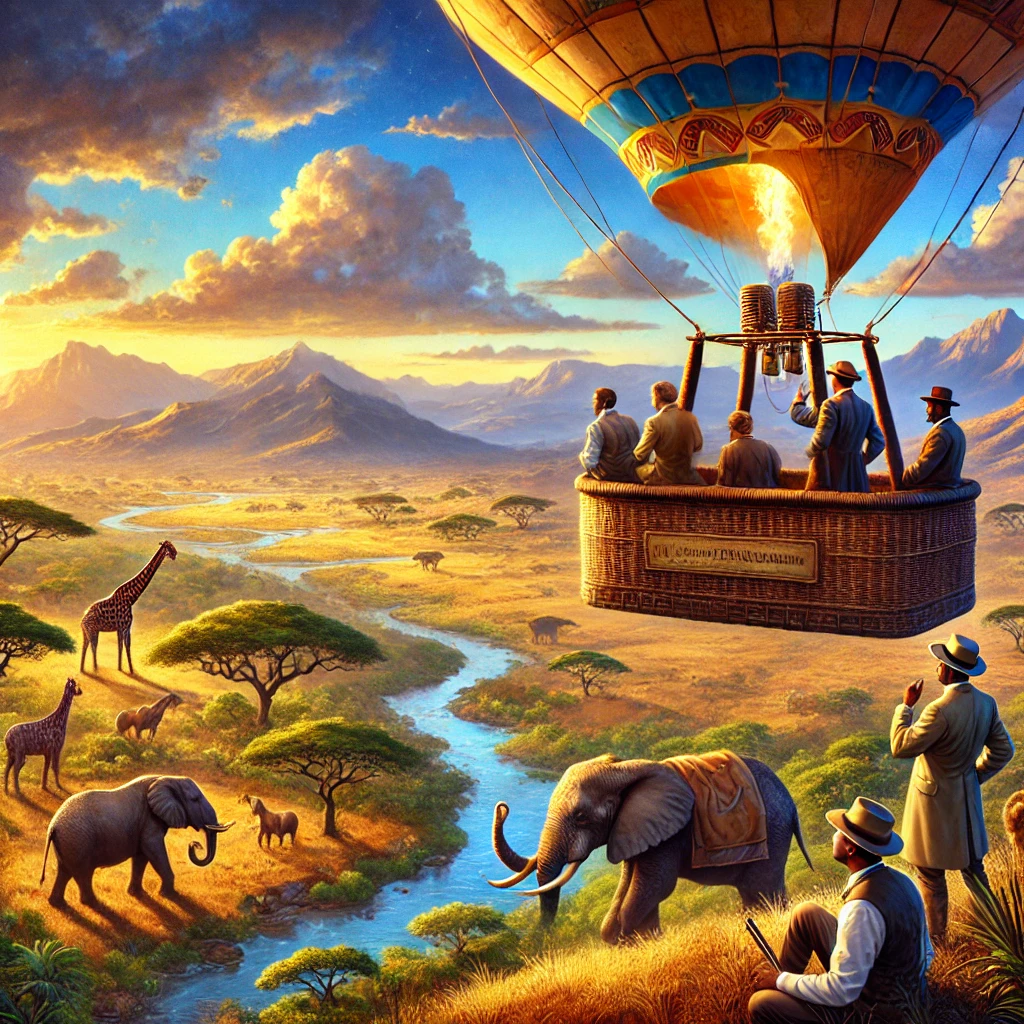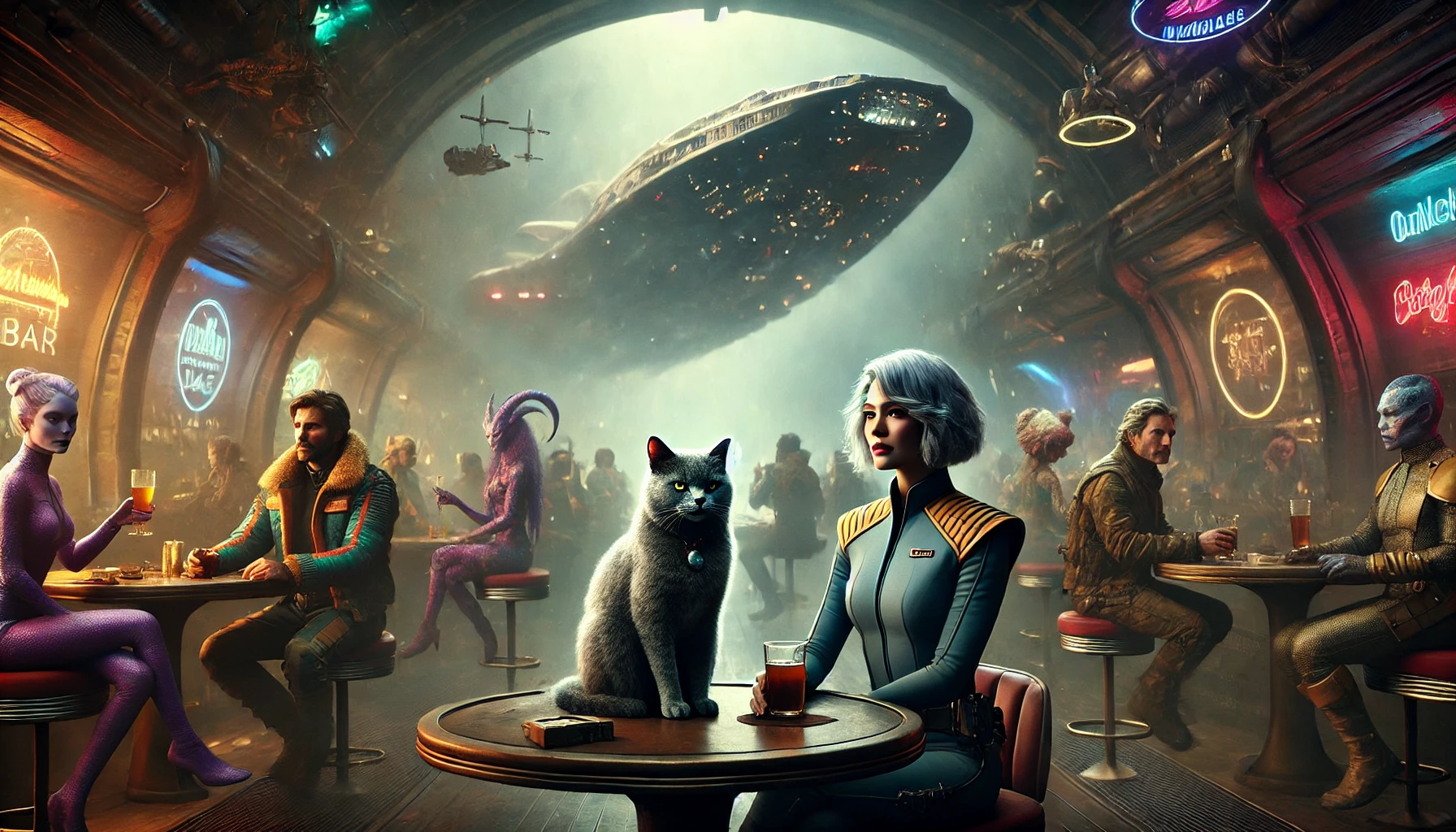A Modern Utopia” is a philosophical novel by H.G. Wells, first published in 1905. The book presents Wells’ vision of an ideal society set on a distant planet that closely mirrors Earth. This Utopia is governed by a system of enlightened and rational laws, where the inhabitants live in harmony and are free to pursue personal development and happiness. Wells explores themes of social organization, justice, and human potential, blending fiction with social commentary and speculative philosophy.
Plot Summary
In “A Modern Utopia,” two travelers, the narrator and a companion known as the Botanist, find themselves transported to an alternate version of Earth, a utopian world where society has evolved to a state of near perfection. The story unfolds as these two characters explore this new world, comparing it with their own and contemplating the possibilities of such a society.
The travelers begin their journey on a snowy mountainside, similar to the Swiss Alps. They descend into a valley where they encounter their first glimpse of the utopian society: a world that combines advanced technology with a profound respect for nature and individual freedom. The narrator describes the landscape as picturesque, with clean, well-maintained towns and cities that blend seamlessly into the natural environment.
As they journey further, the travelers encounter the Samurai, a unique class of citizens who serve as the guardians and administrators of Utopia. The Samurai live by a strict code of conduct, emphasizing discipline, education, and service. They are selected based on their abilities and commitment to the ideals of Utopia, rather than wealth or birthright. The narrator explains that the Samurai are the backbone of Utopian society, ensuring that laws are fair and just, and that every citizen has the opportunity to live a fulfilling life.
The travelers are introduced to various aspects of Utopian life, including its economic system, which is based on cooperation rather than competition. There is no poverty in Utopia; everyone has access to basic necessities, and wealth is distributed more equitably. Work is considered a vital part of life, but it is balanced with ample leisure time, allowing individuals to pursue personal interests and self-improvement.
Education in Utopia is highly valued, with a focus on fostering creativity, critical thinking, and a sense of global citizenship. The educational system is designed to nurture each individual’s potential, and there is a strong emphasis on lifelong learning. The travelers visit several schools and universities, where they observe students engaged in a variety of activities, from scientific research to artistic endeavors.
Healthcare in Utopia is advanced and accessible to all. The society prioritizes preventive care and healthy living, with an extensive network of medical facilities and wellness centers. The travelers are impressed by the general health and well-being of the Utopian population, attributing it to the combination of good healthcare, a balanced diet, and regular physical activity.
The social structure of Utopia is designed to promote equality and cooperation. There are no rigid class distinctions, and individuals are free to choose their own paths in life. The travelers note the absence of crime and conflict, which they attribute to the just and equitable laws, as well as the high level of education and moral development among the citizens. The justice system is restorative rather than punitive, focusing on rehabilitation and reintegration rather than punishment.
One of the most striking features of Utopia is its commitment to environmental sustainability. The society has developed technologies that allow for the efficient use of resources, and there is a strong cultural ethos of conservation and respect for nature. The travelers see examples of renewable energy sources, sustainable agriculture, and green architecture throughout their journey.
As the travelers continue their exploration, they engage in philosophical discussions about the nature of Utopia and the possibilities of achieving such a society on Earth. They ponder the challenges of human nature, the potential for social and technological progress, and the role of government and individual responsibility in creating a better world.
Throughout their journey, the travelers also encounter their doubles—Utopian versions of themselves—who provide a mirror for their own thoughts and behaviors. These encounters provoke introspection and self-examination, as the travelers consider their own lives and the changes they might make to align more closely with the ideals of Utopia.
In the end, the travelers realize that while Utopia may seem ideal, it is not without its own challenges and complexities. They acknowledge that human nature is inherently flawed, and that any attempt to create a perfect society must contend with these imperfections. However, they are inspired by the vision of Utopia and the possibilities it represents for creating a better world.
As they prepare to leave Utopia and return to their own world, the travelers reflect on the lessons they have learned and the changes they hope to make in their own lives. They recognize that while Utopia may be an idealized vision, the principles of equality, justice, and sustainability can serve as guiding lights for their own society.
The book concludes with the travelers’ return to their own world, carrying with them the insights and inspiration they have gained from their journey. They are determined to work towards a better future, drawing on the lessons of Utopia to inform their actions and aspirations.
Main Characters
The Narrator: A thoughtful and reflective individual, the narrator serves as the primary lens through which the reader experiences Utopia. He is curious and open-minded, constantly comparing the Utopian society with his own and pondering the philosophical implications of such a world.
The Botanist: The narrator’s companion, the Botanist is practical and grounded, providing a counterpoint to the narrator’s more philosophical musings. He is knowledgeable about the natural world and contributes to the exploration of Utopia’s environmental and technological advancements.
The Samurai: A class of citizens who act as the guardians and administrators of Utopia. They are chosen based on their abilities and commitment to the ideals of Utopia, living by a strict code of conduct that emphasizes discipline, education, and service.
The Narrator’s Utopian Double: A Utopian version of the narrator who serves as a mirror for self-examination. This character provokes introspection and helps the narrator understand his own thoughts and behaviors more deeply.
Theme
Utopia as a Kinetic Concept: Unlike traditional static utopias, Wells envisions a kinetic utopia, one that evolves and adapts to the changes inherent in human societies. The idea of Utopia as dynamic rather than fixed offers a critique of past idealized states where change was seen as undesirable.
Individual Freedom vs. Collective Order: A central theme is the balance between personal liberty and societal control. Wells explores the idea that true freedom is not absolute but negotiated within the needs of a society. The Utopian state, while appearing free, imposes regulations to ensure that individual actions don’t harm the collective.
Global Governance and Unity: Wells imagines a world-state, where nations are obsolete, and the entire world is governed under one unified system. This motif represents his vision for internationalism and the idea that isolation leads to stagnation, whereas a connected world fosters progress.
The Role of Technology and Progress: Throughout the book, Wells speculates on the impact of technological advancements in shaping the future. The Utopian society is highly efficient, with advanced transport systems, seamless communication, and global mobility, reflecting Wells’ optimism about technology’s potential to improve human life.
Writing Style and Tone
H.G. Wells’ writing style in “A Modern Utopia” is characterized by its clarity and precision, blending narrative storytelling with philosophical discourse. The language is articulate and thoughtful, reflecting the intellectual nature of the book. Wells uses detailed descriptions to create a vivid picture of the Utopian world, making it feel tangible and real to the reader.
The tone of the book is contemplative and optimistic, yet grounded in a realistic understanding of human nature. Wells presents his vision of Utopia with a sense of hope and possibility, while acknowledging the inherent challenges and complexities of achieving such a society. The tone invites readers to engage with the ideas presented and to consider their own perspectives on the themes explored in the book.
We hope this summary has sparked your interest and would appreciate you following Celsius 233 on social media:
There’s a treasure trove of other fascinating book summaries waiting for you. Check out our collection of stories that inspire, thrill, and provoke thought, just like this one by checking out the Book Shelf or the Library
Remember, while our summaries capture the essence, they can never replace the full experience of reading the book. If this summary intrigued you, consider diving into the complete story – buy the book and immerse yourself in the author’s original work.
If you want to request a book summary, click here.
When Saurabh is not working/watching football/reading books/traveling, you can reach him via Twitter/X, LinkedIn, or Threads
Restart reading!








